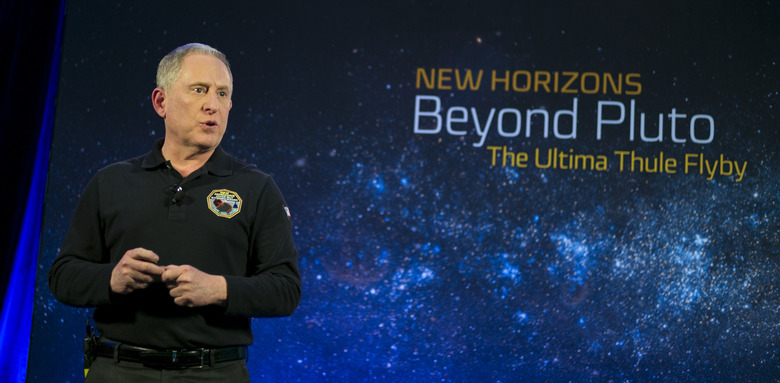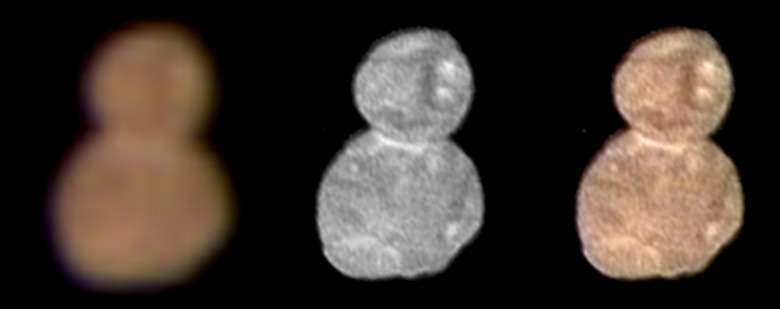NASA's Distant Space Discovery (Ultima Thule) Looks Just Like A Snowman
Been following space news this week? If not, you're missing out on a big story, because NASA just captured images of the most distant object they've ever recorded in high definition: a snowman-shaped object called Ultima Thule (which is Latin for "beyond the known world").
Snapping images of Ultima Thule is pretty newsworthy for a few reasons. For one, it's located at the very edge of our solar system, well beyond Pluto and nearly into deep space. Second, it seems to be incredibly old (like, beginning of our solar system old). And it's also a pretty new discovery, from a mission that launched in 2014. In other words, just five years ago we had no idea it existed.
So, How Did Scientists Learn About Ultima Thule?
So, How Did Scientists Learn About Ultima Thule?
Like many scientific discoveries, getting high-resolution images of Ultima Thule came about because of a bit of luck. In 2014, NASA launched a space probe, called New Horizons, set to travel throughout our solar system and capture images of Pluto.
But, fortunately, the probe still had some fuel in the tank and kept traveling. And, as you can probably guess, New Horizons ran into something else – Ultima Thule!
So far, scientists know that Ultima Thule used to be two separate objects. They collided gently and merged over time, creating the snowman-shaped object we saw this week. And because the outer edges of our solar system are so desolate, Ultima Thule has remained well-preserved over time. It's about 21 miles long in total, or a little less than twice the length of Manhattan.
Scientists also know that Ultima Thule is frozen (for reference, Pluto's temperature is almost –400 degrees Fahrenheit). It's also red in color, thanks to years and years of exposure to cosmic radiation. And it's about 4 billion miles away from earth – about 900 million miles farther away than Pluto.
What are the Next Steps to Exploring Ultima Thule?
What are the Next Steps to Exploring Ultima Thule?
While capturing high-resolution images of Ultima Thule is a big step forward in space exploration, scientists have lots of work ahead to learn more. Scientists aren't yet sure what Ultima Thule is made of (there are a few types of ice in space, and Ultima Thule could be made of some combination of any of them). And astronomers are also on the hunt for moons that could be orbiting the object.
What's more, the New Horizons probe is still going, and its travels farther out into space will give us insight into what could be located at the edges of our solar system. And as more and more countries make space exploration a priority – like China, who just landed on the moon this week – we'll continue to learn more about our solar system and our understanding of the universe.
Cite This Article
MLA
Tremblay, Sylvie. "NASA's Distant Space Discovery (Ultima Thule) Looks Just Like A Snowman" sciencing.com, https://www.sciencing.com/nasas-distant-space-discovery-ultima-thule-looks-just-like-a-snowman-13716491/. 4 January 2019.
APA
Tremblay, Sylvie. (2019, January 4). NASA's Distant Space Discovery (Ultima Thule) Looks Just Like A Snowman. sciencing.com. Retrieved from https://www.sciencing.com/nasas-distant-space-discovery-ultima-thule-looks-just-like-a-snowman-13716491/
Chicago
Tremblay, Sylvie. NASA's Distant Space Discovery (Ultima Thule) Looks Just Like A Snowman last modified August 30, 2022. https://www.sciencing.com/nasas-distant-space-discovery-ultima-thule-looks-just-like-a-snowman-13716491/

